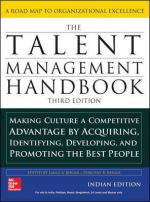Tab Article
The go-to guide to strategic talent management— revised and reorganized for the new world of business
HR professionals, CEOs, and high-level executives routinely consult The Talent Management Handbook to drive spectacular results for their staff and for their organization. This comprehensive guide provides everything you need to build and manage a diverse, talented, and motivated workforce—the lynchpin to succeeding in today’s hyper-competitive world.
Each section of the book provides the most current HR processes, practical management tools and techniques, and invaluable resources that will help you:
- Attract new talent and retain the cream of the crop
- Design career plans that boost employee morale
- Improve performance through a personal value exchange
- Coach, develop, and inspire raw talent and prepare the CEOs of the future
- Improve the performance review process
- Create a culture of innovation and sustainability
This updated edition retains all the frameworks, methods, and insights that have made the book a classic in the field, and it includes brand-new information about talent acquisition, professional development, big data, global talent, and more.
Packed with best practices from the world’s leading talent management firms, associations, and top talent management thinkers—Korn Ferry-Hay Group, Mercer, Society for Human Resources Management, Association for Talent Management, Center for Creative Leadership, Dave Ulrich, and Marshall Goldsmith just to name a few. The Talent Management Handbook is the all-in-one resource you need to drive organizational excellence and seize the competitive edge.


